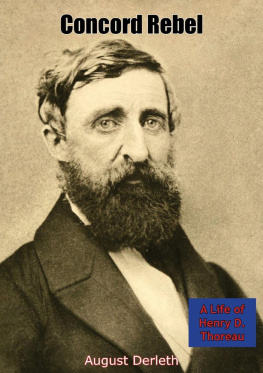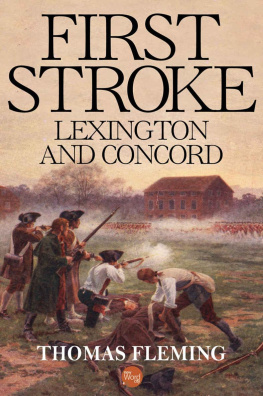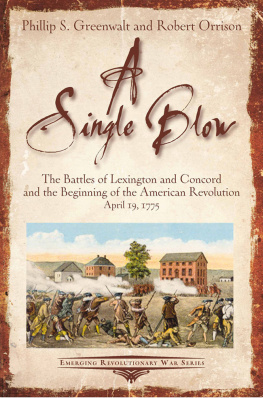PREFACE
The townof Concord is probably as attractive in historical features as any in thiscountry. Its early connection with the American Revolution; its associationwith the life and works of Emerson, Hawthorne, Thoreau and other distinguishedauthors; and its having formerly been the County Seat of old Middlesex allcontribute to make the place notable. It is thronged annually with thousands ofvisitors, some mere sightseers, some seeking inspiration from the shrines visited,some to say they have been to Concord.
TheHistory of Concord written by Lemuel Shattuck and published in 1835, is not noweasily obtainable. Only a few copies, if any, of the work of Charles H.Walcott, Esq., remain unsold; and the historical sketches of Rev. GrindallReynolds, D. D., and the Hon. John S. Keyes were written for the Histories ofMiddlesex County, which are too bulky and expensive for common use.
Besidesthese standard works, nothing that we are aware of has been published of thetown's consecutive annals, except occasional pamphlets and addresses. Becauseof these things we believe an available History may be desirable, and by thepreparation of these pages we have sought to supply it.
The workis designed to be in two volumes; the first entitled Colonial Concord: thesecond, Provincial Concord.
Volume Iincludes the annals of the town from its origin in 1635, until 1692, at whichtime the Massachusetts Bay Colony became a Province, together with briefbiographical sketches of the original grantees.
VolumeII. will include the annals from 1692 through the Provincial period to theclose of the Revolutionary war.
Volume Iis divided into two parts. The first contains the story of the settlementsetting forth the leading facts in the town's history, so far as known, to theyear 1655.
In thisportion of the work the writer has employed both fact and fiction; but in sucha manner as to enable the reader easily to distinguish the one from the other.This method has been adopted because many of the early records were lost, andit is designed to supply the deficiency, as relates to manners and customs, byconjecture based on analogy as these were known to exist in other towns at thesame time.
Thesecond part is pure history. The facts are mainly given in chronological orderand to a large extent set forth by copies of original records and ancientpapers with references to the places where they are found.
A workon local history to be in the highest degree instructive should be more than amere compilation of dates, statistics, and isolated facts, valuable only toantiquaries and genealogists. It should have such a background or setting ofgeneral history as will give the reader an intelligent understanding of thecauses and results of the local events described.
For thisreason, in instances where an occurrence is prominently connected with eventsin the country at large, the latter have been sufficiently described to showthe relationship of one to the other.
No claimis made to great original research. The field of Concord history has been toocarefully harvested in the past, to leave much opportunity for the gleaner togather new sheaves, or to find much rich aftermath. We have collected ourmaterial from every available source whether of records, manuscript,publication or tradition. We have avoided dogmatic assertion and have intendedto state hypothetically whatever is doubtful or unsettled.
Prominentamong the writers of local history from whom we have quoted are those of LemuelShattuck, Charles E. Walcott, Esq. Rev. Grindall Reynolds, D. D. Hon John S.Keyes, and Albert E. Wood. We have also received valuable suggestions from thelate Alfred Hosmer, and are also indebted to the historian, Rev. G. M. Bodge,to the Littleton Historical Society, and others whose services have been kindlyproffered and gratefully received.
That thework is free from errors it would be presumption to assert. No prudent writerof local history would make pretense to this. Neither do any who are charitablydisposed and have had experience in the difficult work of the local annalistpresume to judge the work of another from the standpoint of perfect accuracy.There are many subjects which will always be matters of doubt and controversy.
Evidenceconsidered admissible by some might be rejected by others; and cases may occurwhen the evidence is considered about equal on either side.
Thiswork has been written from the position of one who has great reverence for thereligious faith of the fathers, and who recognizes in this faith a strongfactor in whatever of greatness has accrued to us, as a Nation.
And ifbringing out the facts, many of which are too little known, shall lead to ahigher appreciation of the fathers and of the faith that made them what theywere, one great object of the author will be accomplished.
A. S. H.
PART I. STORY OF THE SETTLEMENT OF CONCORD,MASS.
CHAPTER I.
Atraveler's visit to an early homestead at Concord, Massachusetts Scene at aSettler s fireside Company expectedStrange sounds and sights talked about Town Meeting topics discussed Description of Concord in the present Objectsof Historic Interest The North Bridge Houses of the Revolutionary Period The Wright Tavern First Parish Meeting HouseThe Antiquarian House Meriam's Corner.
THE fireflickered and the sparks flew up the broad chimney, as a traveler sat on a fallevening before the half-burnt backlog, in Goodman Hartwell's snug farm-house inConcord town about two centuries and a half ago.
It wasevident from the appearance of things that company was expected, for besidesthe usual oaken settle and chairs there were standing about sundry stools and along, low bench. Presently a sound was heard at the door as if someone werefumbling for the latchstring, and as it opened several neighbors entered andalso Goodmen Buttrick and Heald from the North quarter and Miles and Dakin fromthe South. A little later, Parson Peter Bulkeley arrived with the Gobble boyswho had come from down by the river bay in an oxcart and having overtaken theminister had brought him along.
Whilewaiting for others to come, various subjects were talked about, among whichwere some strange noises which Colonial Goody Dean said she "heerd nearthe buryin ground."
Somesaid they were made by an earthquake, others suggested a landslide, but theseexplanations did not satisfy Duty, who declared that "the sounds wareabove the airth, not under it nor inside it. Besides," said she, "themilk has soured twice sence I heerd them so I think the cows heerd them too furthey feed there."
Thematter being referred to the minister he said, after a moment's reflection,"Such things being unusual contain a lesson and should lead us to becircumspect and careful in our conduct." He was about to say more but wasinterrupted by a faint rap at the back door which was at the end of a low entryunder the lean-to roof.
GoodmanHartwell snatched from the mantlepiece a save-all on which a short candle stubsputtered and going out soon returned with Goody Rice who had come across lotsfor an evening call. The newcomer created a fresh breeze of excitement for sheconfirmed what Duty had said of the queer noises, and also told about a strangecreature which had several times been seen near the "great meadows,"sometimes looking like a man and sometimes like a goat, but always vanishingwhen approached.









